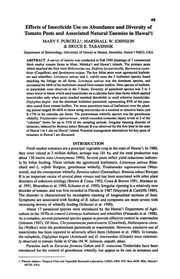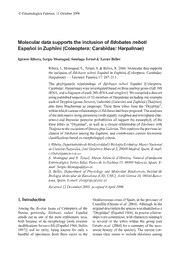
Oxford handbook of medical dermatology PDF
Preview Oxford handbook of medical dermatology
OXFORD MEDICAL PUBLICATIONS Oxford Handbook of Medical Dermatology Published and forthcoming Oxford Handbooks Oxford Handbook for the Foundation Oxford Handbook of General Programme 4e Practice 4e Oxford Handbook of Acute Oxford Handbook of Genetics Medicine 3e Oxford Handbook of Genitourinary Oxford Handbook of Anaesthesia 4e Medicine, HIV and AIDS 2e Oxford Handbook of Applied Oxford Handbook of Geriatric Dental Sciences Medicine 2e Oxford Handbook of Cardiology 2e Oxford Handbook of Infectious Oxford Handbook of Clinical Diseases and Microbiology and Healthcare Research Oxford Handbook of Key Clinical Oxford Handbook of Clinical Evidence and Laboratory Investigation 3e Oxford Handbook of Medical Oxford Handbook of Clinical Dermatology 2e Dentistry 6e Oxford Handbook of Medical Imaging Oxford Handbook of Clinical Oxford Handbook of Medical Diagnosis 3e Sciences 2e Oxford Handbook of Clinical Oxford Handbook of Medical Statistics Examination and Practical Skills 2e Oxford Handbook of Neonatology Oxford Handbook of Clinical Oxford Handbook of Nephrology Haematology 4e and Hypertension 2e Oxford Handbook of Clinical Oxford Handbook of Neurology 2e Immunology and Allergy 3e Oxford Handbook of Nutrition Oxford Handbook of Clinical and Dietetics 2e Medicine – Mini Edition 9e Oxford Handbook of Obstetrics Oxford Handbook of Clinical and Gynaecology 3e Medicine 9e Oxford Handbook of Occupational Oxford Handbook of Clinical Health 2e Pathology Oxford Handbook of Oncology 3e Oxford Handbook of Clinical Oxford Handbook of Ophthalmology 3e Pharmacy 2e Oxford Handbook of Oral and Oxford Handbook of Clinical Maxillofacial Surgery Rehabilitation 2e Oxford Handbook of Orthopaedics Oxford Handbook of Clinical and Trauma Specialties 9e Oxford Handbook of Paediatrics 2e Oxford Handbook of Clinical Oxford Handbook of Pain Surgery 4e Management Oxford Handbook of Complementary Oxford Handbook of Palliative Care 2e Medicine Oxford Handbook of Practical Drug Oxford Handbook of Critical Care 3e Therapy 2e Oxford Handbook of Dental Oxford Handbook of Pre-Hospital Patient Care Care Oxford Handbook of Dialysis 4e Oxford Handbook of Psychiatry 3e Oxford Handbook of Emergency Oxford Handbook of Public Health Medicine 4e Practice 3e Oxford Handbook of Endocrinology Oxford Handbook of Reproductive and Diabetes 3e Medicine & Family Planning 2e Oxford Handbook of ENT and Head Oxford Handbook of Respiratory and Neck Surgery 2e Medicine 3e Oxford Handbook of Epidemiology Oxford Handbook of Rheumatology 3e for Clinicians Oxford Handbook of Sport and Oxford Handbook of Expedition and Exercise Medicine 2e Wilderness Medicine 2e Handbook of Surgical Consent Oxford Handbook of Forensic Oxford Handbook of Tropical Medicine Medicine 4e Oxford Handbook of Gastroenterology Oxford Handbook of Urology 3e & Hepatology 2e Oxford Handbook of Medical Dermatology Second Edition Susan Burge Honorary Consultant Dermatologist Oxford University Hospitals NHS Foundation Trust and Honorary Senior Clinical Lecturer, University of Oxford, UK Rubeta Matin Consultant Dermatologist Oxford University Hospitals NHS Foundation Trust and Honorary Senior Clinical Lecturer, University of Oxford, UK Dinny Wallis Consultant Rheumatologist University Hospital Southampton NHS Foundation Trust, UK 1 1 Great Clarendon Street, Oxford, OX2 6DP, United Kingdom Oxford University Press is a department of the University of Oxford. It furthers the University’s objective of excellence in research, scholarship, and education by publishing worldwide. Oxford is a registered trade mark of Oxford University Press in the UK and in certain other countries © Oxford University Press 2016 The moral rights of the authors have been asserted First Edition published 2011 Second Edition published 2016 Impression: 1 All rights reserved. No part of this publication may be reproduced, stored in a retrieval system, or transmitted, in any form or by any means, without the prior permission in writing of Oxford University Press, or as expressly permitted by law, by licence or under terms agreed with the appropriate reprographics rights organization. Enquiries concerning reproduction outside the scope of the above should be sent to the Rights Department, Oxford University Press, at the address above You must not circulate this work in any other form and you must impose this same condition on any acquirer Published in the United States of America by Oxford University Press 198 Madison Avenue, New York, NY 10016, United States of America British Library Cataloguing in Publication Data Data available Library of Congress Control Number: 2016936807 ISBN 978–0 –1 9–8 74792–5 Printed and bound in China by C&C Offset Printing Co., Ltd. Oxford University Press makes no representation, express or implied, that the drug dosages in this book are correct. Readers must therefore always check the product information and clinical procedures with the most up- to- date published product information and data sheets provided by the manufacturers and the most recent codes of conduct and safety regulations. The authors and the publishers do not accept responsibility or legal liability for any errors in the text or for the misuse or misapplication of material in this work. Except where otherwise stated, drug dosages and recommendations are for the non- pregnant adult who is not breast- feeding Links to third party websites are provided by Oxford in good faith and for information only. Oxford disclaims any responsibility for the materials contained in any third party website referenced in this work. v Foreword to the second edition If you are faced with a challenging skin problem, then pull this brilliant and magical book from your bag, or search it with your electronic device: the answer will be there. It is packed with top tips, information gems and clinical pearls. Whether you are a student needing a logical and clear way to understand dermatology, if you are in primary care faced with a diag- nosis that requires a quick refresh of your memory, or a hospital doctor or dermatology trainee dealing with emergencies and complex cases, this book will become your friend and companion. This new edition introduces fresh new writing on eczema and tumours, a new chapter on genetic skin diseases and expansion of the tropical diseases section. Dinny Wallis has updated the rheumatology disorders and vasculitis. Rubeta Matin has joined the team from Oxford bringing expertise in immunosuppression. The whole book is right up to date so experienced consultant dermatologists will find it a useful quick refer- ence for managing complex diseases. The text flows and draws in the reader who will quickly be absorbed, oblivious to passing time. The question and answer format, the text boxes and the clarity of the writing make the second edition of Sue Burge’s Oxford Handbook of Medical Dermatology the go-to small dermatology textbook. The British Society of Medical Dermatology gives this as a prize to the best UK train- ees at their meeting each year. This is the book to get if you truly wish to understand dermatology. Nick Levell President: British Association of Dermatologists (2016–18); Director of Dermatology, Consultant Dermatologist, Norfolk and Norwich University Hospital; Specialty National Lead (Dermatology), National Institute of Health Research, UK vi Foreword to the first edition Dr Susan Burge and I first (really) met as senior registrars to the Department of Dermatology in Oxford in 1981. It soon became appar- ent to me that Susan’s most commonly asked question was ‘why?’, always spoken in a most expressive Northern Irish accent. Usually there was no easy answer which of course indicated why she had asked the question in the fi rst place. If an answer was preferred it had to make sense, be logical and simple. Any flannel would meet with short shrift! This story refl ects the (senior) author’s enquiring mind and need for knowledge to be imparted in a sound, simple and logical way. It therefore comes as no surprise that the format of the new textbook is prompted by questions: What should I look for? What should I do? Dermatology is arguably the most clinical of all medical specialties because it relies less on investigation and more on good old fashioned observation and interpretation of symptoms and signs for diagnosis. Dermatology practice is sometimes criticized for being simply a ‘spot diagnosis’ and for using outdated Latin terminology. The diagnosis and management of skin disease, however, demands a logical ordering and structuring of clinical information in such a way that makes it a most stim- ulating intellectual exercise which has few equals among other medical specialties. In this new book Susan and Dinny, who is currently in specialist training in rheumatology, bring a refreshingly new approach to learning derma- tology. The combination of old and young authors (forgive me Susan!) brings a nice balance of wisdom and practicality—exactly what the junior doctor requires. Professor Peter Mortimer Professor of Dermatological Medicine to the University of London, Consultant Skin Physician to St George’s Hospital, London, and the Royal Marsden Hospital, London vii Preface The second edition of this Handbook still provides a practical introduc- tion to dermatology, with an emphasis on the medical aspects of the spe- cialty. Skin problems are hugely variable (>2500 diagnoses), but we hope this little book will help you to make sense of what you find and will pro- vide you with a framework for analysing clinical signs, so that you develop your diagnostic expertise. Dermatology trainees should find the book particularly useful, as may hospital doctors in other medical specialties faced with assessing skin problems, but it also includes much that will be of value to those working in the community and to medical students. The content has been updated, and we have tried to make it even more comprehensive. We include a new chapter on dermatogenetics and have added to other sections, particularly those on skin in infancy and childhood, cutaneous reactions to drugs, skin tumours, and skin and rheumatology. We discuss common and important skin problems, such as skin failure and emergency dermatology, eczema, psoriasis, blisters, vasculitis, and pustular rashes, but also include some fascinating rarities that we hope may inspire you to read more. Each topic includes answers to the clini- cal questions ‘What should I ask?’, ‘What should I look for?’, and ‘What should I do?’. Management guidelines have been incorporated, where possible. The expanded tumour chapter will help you to recognize and manage skin tumours, including those in immunosuppressed individuals, as well as to advise on photoprotection, but the Handbook does not include information on surgical techniques in dermatology. Chapters on skin problems in the medical specialties should be of par- ticular interest to physicians working in those disciplines. We introduce skin conditions that you may encounter when working in specialties such as rheumatology, haematology, nephrology, endocrinology, and gas- troenterology. The section on medical management introduces topical treatments, occlusion, and wet dressings, as well as discussing the sys- temic drugs commonly used in dermatology. Illustrations complement the text, but the emphasis is on enabling you to make sense of the findings using your clinical skills, rather than match- ing findings to pictures. We hope that you will find this book useful when you are asked to see someone with a puzzling skin problem and that there will be a place for it in your pocket, in the outpatient clinic, or on the ward. Please send back your comments or criticisms, so that we can improve the book in future editions. You can send your comments to us via the OUP website M http://w ww.oup.co.uk. viii Acknowledgements Once more, we would like to thank the Oxford dermatology trainees (now consultants) who inspired the book. It is still used in our regular Tuesday morning teaching. We are very grateful to these colleagues who provided invaluable advice on individual chapters and answered our questions so patiently: Andrew Brent and Chris Conlon (infections) Fiona Browne (genetics) James Burge (neurology) Caroline Champagne (hair) Susan Cooper (eczema and mucosal disorders) Sarah Felton and Sheru George (photodermatology) Rachael Morris- Jones (infestations and parasites) Celia Moss (neurofibromatosis) Graham Ogg (immunology) Vanessa Venning (blisters) Sarah Walsh (severe drug reactions). ix Contents Symbols and abbreviations xi 1 Structure and function of the skin 1 2 The history in dermatology 17 3 Examination of the skin 37 4 What is the diagnosis? 53 5 Skin failure and emergency dermatology 99 6 Bacterial and spirochaetal infections 129 7 Viral and fungal infections 149 8 Infestations and parasites 171 9 Psoriasis 189 10 Eczema and lichen planus 211 11 Urticaria and erythema 227 12 Pustular rashes 241 13 Blisters 259 14 Oral and genital mucosae 277 15 Leg ulcers and lymphoedema 291 16 Sun and skin 319 17 Tumours 341 18 Cutaneous reactions to drugs 365 19 Skin and rheumatology 393 20 Vasculitis 435 21 Panniculitis 455 22 Skin and diabetes and endocrinology 465 23 Skin and renal disease 491 24 Skin and gastroenterology 505 25 Skin and chest diseases 523
Description:The list of books you might like

The 48 Laws of Power

Rich Dad Poor Dad

The Mountain Is You

Shatter Me Complete Collection (Shatter Me; Destroy Me; Unravel Me; Fracture Me; Ignite Me)

BY ORDER OF THE SECRETARY OF THE AIR FORCE AIR FORCE INSTRUCTION 11-2EC-130J ...

ARNOLDS-PATRON, Paul, MONEY & BANKING B.S., New York, 1936

BUYllK ARAP şAiRi ZUHEYR B. EBİ SULMA VE TER

Philosophical Magazine and Letters 1993: Vol 68 Index

The Natural History of Chocolate by D de Quelus

Kalyana Kalpataru Gita-tattva No Ii

Precious Memories by George C. Lambert
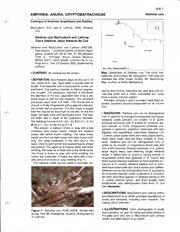
Stefania coxi
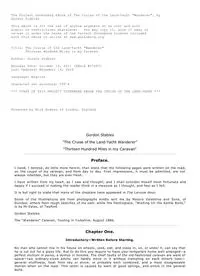
The Cruise of the LandYacht Wanderer by Gordon Stables

Las fórmuLas retóricas deL rebusque un estudio desde La semiótica sociaL de HaLLiday

Punch or the London Charivari October 30 1841

caliphs and kings

Quasar 270 RC
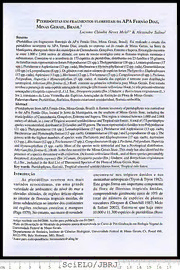
Pteridófitas em fragmentos florestais da APA Fernão Dias, Minas Gerais, Brasil
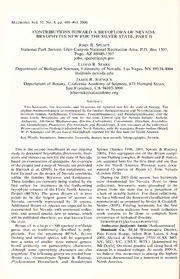
CONTRIBUTIONS TOWARD A BRYOFLORA OF NEVADA: BRYOPHYTES NEW FOR THE SILVER STATE, PART II
